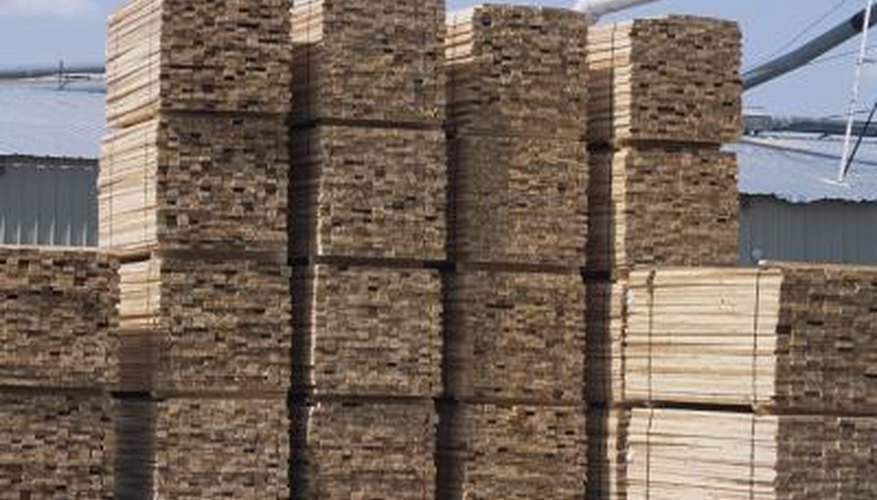Strutting constitutes a construction technique used to reinforce buildings. Basically, a strut consists of a support system used to bolster beams in floors and ceilings. Various types of strutting exist, some using wood and some using galvanised steel. Struts help prevent long joists, or wooden beams running from wall-to-wall in ceilings and floors, from buckling or warping. Two types of wooden struts exist, herringbone struts and solid strutting. Requirements of size and material apply to both.
Joist Size Requirements
Joists only require timber strutting if they meet or exceed certain size requirements. Depending upon the source, any joist longer than 2, 2.4 or 2.5 meters---6.5, 7.9 or 8.2 feet---requires strutting. Joists measuring between 2 and 4.5 meters---6.5 to 14.7 feet---require one strut, placed in the middle of the boards, for support. Joists longer than 4.5 meters require two rows of strutting, each placed a third of the joist length away from a wall. For instance, a 9-meter joist requires one strut, 3 meters in from each wall.
- Joists only require timber strutting if they meet or exceed certain size requirements.
- Joists measuring between 2 and 4.5 meters---6.5 to 14.7 feet---require one strut, placed in the middle of the boards, for support.
Strut Size Requirements
Timber struts must meet certain size requirements to prove effective on construction projects. To possess the strength required to properly bolster joists, solid timber struts should be at least 38 millimetres, or approximately 1.5 inches, wide and possess a depth of at least 75 per cent that of the joists in question. Herringbone struts require timber measuring 38 by 38 millimetres for proper construction, unless the distance between joists measures more than three times the three times the depth of the joist, in which case thicker wood is required to give herringbone struts the necessary strength.
Timber Type for Strutting
International building code regulations suggested by the Timber Research and Development Association (TRADA) require timber strutting material to be of a certain grade in order to qualify as regulation strutting timber. These regulations consider common timber types found in the United States, United Kingdom and Canada. The grade of wood required for strutting depends upon the species of timber, and follows various systems of grading, including the BS 4978 visual softwood grading system introduced by the British Standards Institute and the National Grading Rule for Dimension Lumber grading system introduced by American Lumber Standard Committee.
Additional Information
In order to install timber herringbone strutting, builders require access from both above and below the joists. This proves somewhat difficult when installing herringbone struts between floor joists unless builders can access a floor through the basement of a structure.
Two types of solid timber strutting exist. Generally solid timber strutting constitutes short lengths of solid wood nailed between joists as a stabilising method. However, advance planning allows for the creation of slots in a series of joists through which solid struts slide. Herringbone struts prove more difficult to construct than solid struts but are ultimately more effective in most cases.
- In order to install timber herringbone strutting, builders require access from both above and below the joists.
- Generally solid timber strutting constitutes short lengths of solid wood nailed between joists as a stabilising method.
